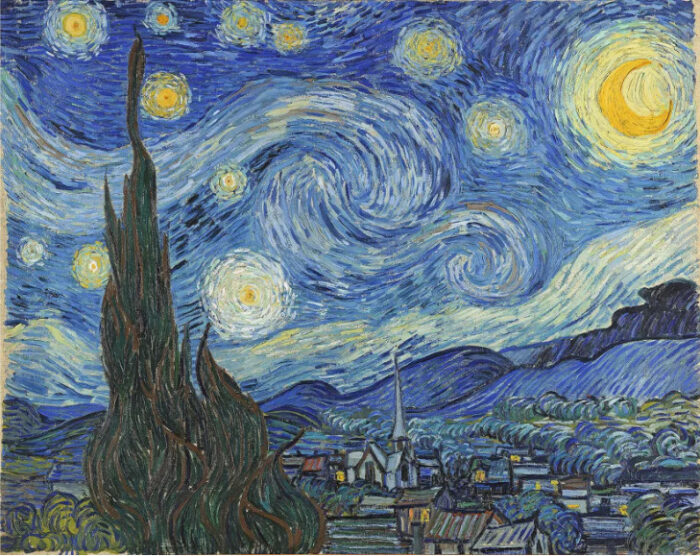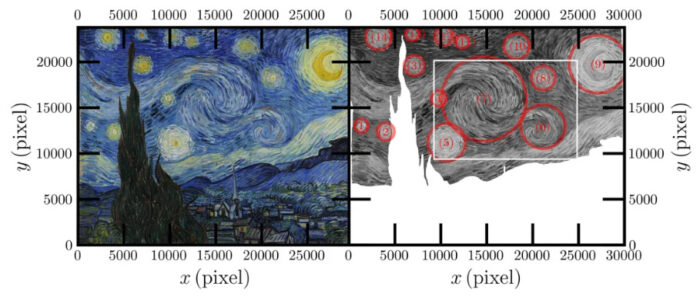
Vincent van Gogh’s “The Starry Night,” with its tumultuous swirls of deep blues and vibrant yellows, serves as a window into the artist’s psyche during a period of profound personal struggle. Painted in 1889 from the confines of his asylum room in Saint-Rémy-de-Provence, this masterpiece is often perceived as an emotional reflection of van Gogh’s turbulent mind. However, a recent study conducted by physicists from China and France unveils a more intricate layer to this iconic work, suggesting that van Gogh may have intuitively grasped the mathematical intricacies of turbulent flow—a natural phenomenon characterized by chaotic movement and swirling patterns.

Turbulent flow, observed in everything from river currents to atmospheric movements, is often dismissed as random chaos. Yet, as lead researcher Yongxiang Huang explains, these patterns follow specific laws of physics that can be mathematically modeled. By examining the fourteen prominent eddies in “The Starry Night,” Huang and his team utilized digital imaging to analyze the brushstrokes and their relative intensities. This rigorous analysis revealed that the arrangement and scale of these swirls resonate with Kolmogorov’s theory of turbulence, which describes how energy dissipates across varying scales within a fluid dynamic system.

Intriguingly, Huang’s findings suggest that the small-scale paint mixing in the artwork adheres to Batchelor’s scaling, a principle that outlines how particles are transported within turbulent flows. This convergence of artistic expression and scientific theory highlights an unexpected harmony between van Gogh’s visual language and the complexities of nature. James Beattie, an astrophysics researcher, emphasized the significance of these parallels, noting that the statistics observed in van Gogh’s work are reflective of universal phenomena. This correlation underscores a profound connection between the chaos depicted in art and the turbulent motions of the natural world.

While van Gogh could not have consciously understood these mathematical constructs, his keen observation of nature influenced his artistic practice. The realization that “The Starry Night” mirrors the statistical patterns found in turbulence speaks to the artist’s intuitive grasp of natural dynamics. Beattie’s reflections on the painting suggest that van Gogh encapsulated a form of universal truth through his art, capturing the essence of turbulence and drawing viewers into its mesmerizing beauty. As “The Starry Night” continues to inspire awe and fascination, it stands not only as a testament to van Gogh’s genius but also as a bridge connecting art with the profound complexities of the universe.


